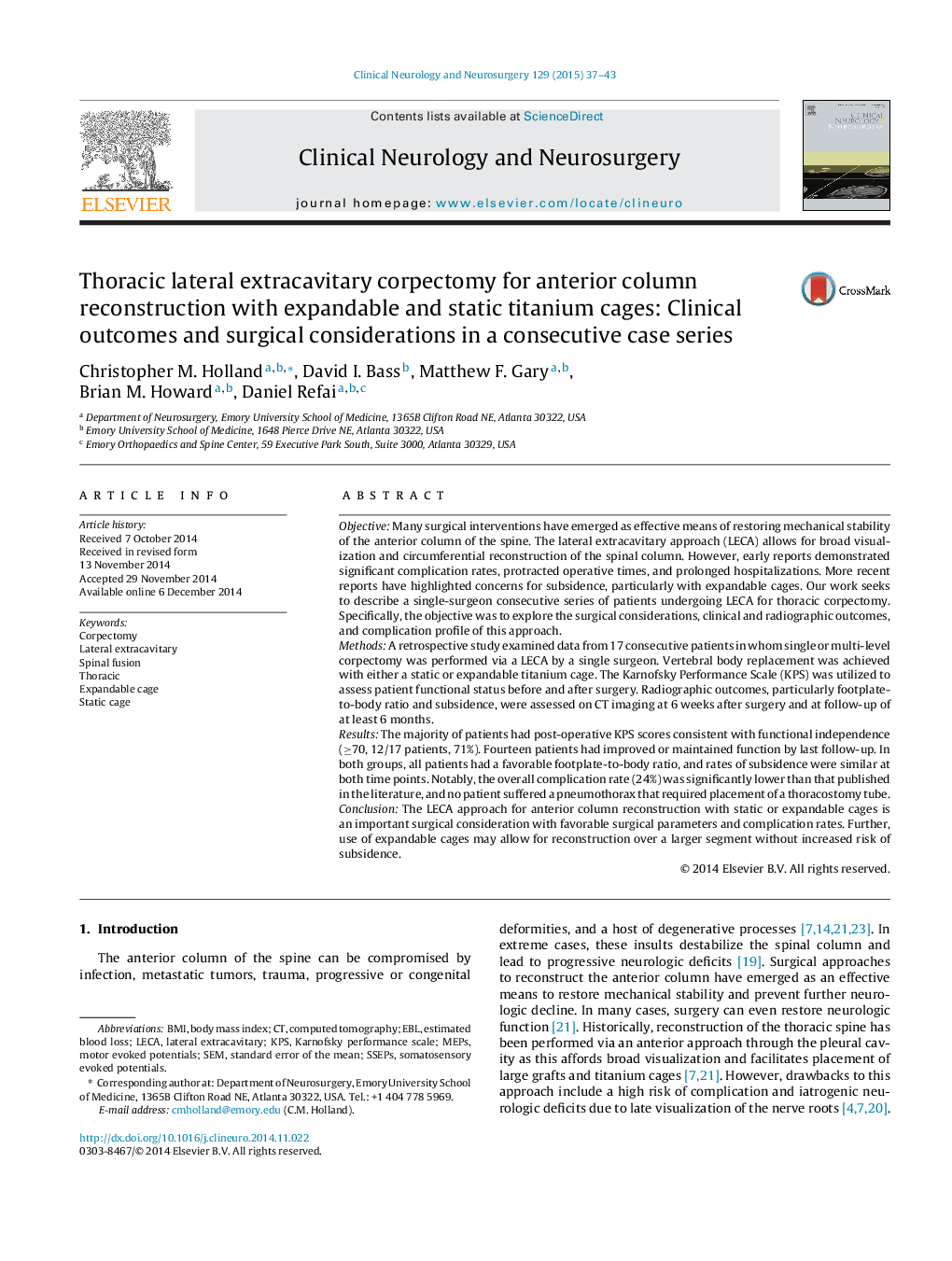| کد مقاله | کد نشریه | سال انتشار | مقاله انگلیسی | نسخه تمام متن |
|---|---|---|---|---|
| 3039974 | 1579693 | 2015 | 7 صفحه PDF | دانلود رایگان |
• Most patients were functionally independent by last follow up.
• Rates of subsidence at last follow up were comparable between expandable and static cage groups.
• Subsidence with expandable cages was associated with multilevel corpectomies.
• The LECA can be a safe approach for circumferential reconstruction of the thoracic spine.
ObjectiveMany surgical interventions have emerged as effective means of restoring mechanical stability of the anterior column of the spine. The lateral extracavitary approach (LECA) allows for broad visualization and circumferential reconstruction of the spinal column. However, early reports demonstrated significant complication rates, protracted operative times, and prolonged hospitalizations. More recent reports have highlighted concerns for subsidence, particularly with expandable cages. Our work seeks to describe a single-surgeon consecutive series of patients undergoing LECA for thoracic corpectomy. Specifically, the objective was to explore the surgical considerations, clinical and radiographic outcomes, and complication profile of this approach.MethodsA retrospective study examined data from 17 consecutive patients in whom single or multi-level corpectomy was performed via a LECA by a single surgeon. Vertebral body replacement was achieved with either a static or expandable titanium cage. The Karnofsky Performance Scale (KPS) was utilized to assess patient functional status before and after surgery. Radiographic outcomes, particularly footplate-to-body ratio and subsidence, were assessed on CT imaging at 6 weeks after surgery and at follow-up of at least 6 months.ResultsThe majority of patients had post-operative KPS scores consistent with functional independence (≥70, 12/17 patients, 71%). Fourteen patients had improved or maintained function by last follow-up. In both groups, all patients had a favorable footplate-to-body ratio, and rates of subsidence were similar at both time points. Notably, the overall complication rate (24%) was significantly lower than that published in the literature, and no patient suffered a pneumothorax that required placement of a thoracostomy tube.ConclusionThe LECA approach for anterior column reconstruction with static or expandable cages is an important surgical consideration with favorable surgical parameters and complication rates. Further, use of expandable cages may allow for reconstruction over a larger segment without increased risk of subsidence.
Journal: Clinical Neurology and Neurosurgery - Volume 129, February 2015, Pages 37–43
